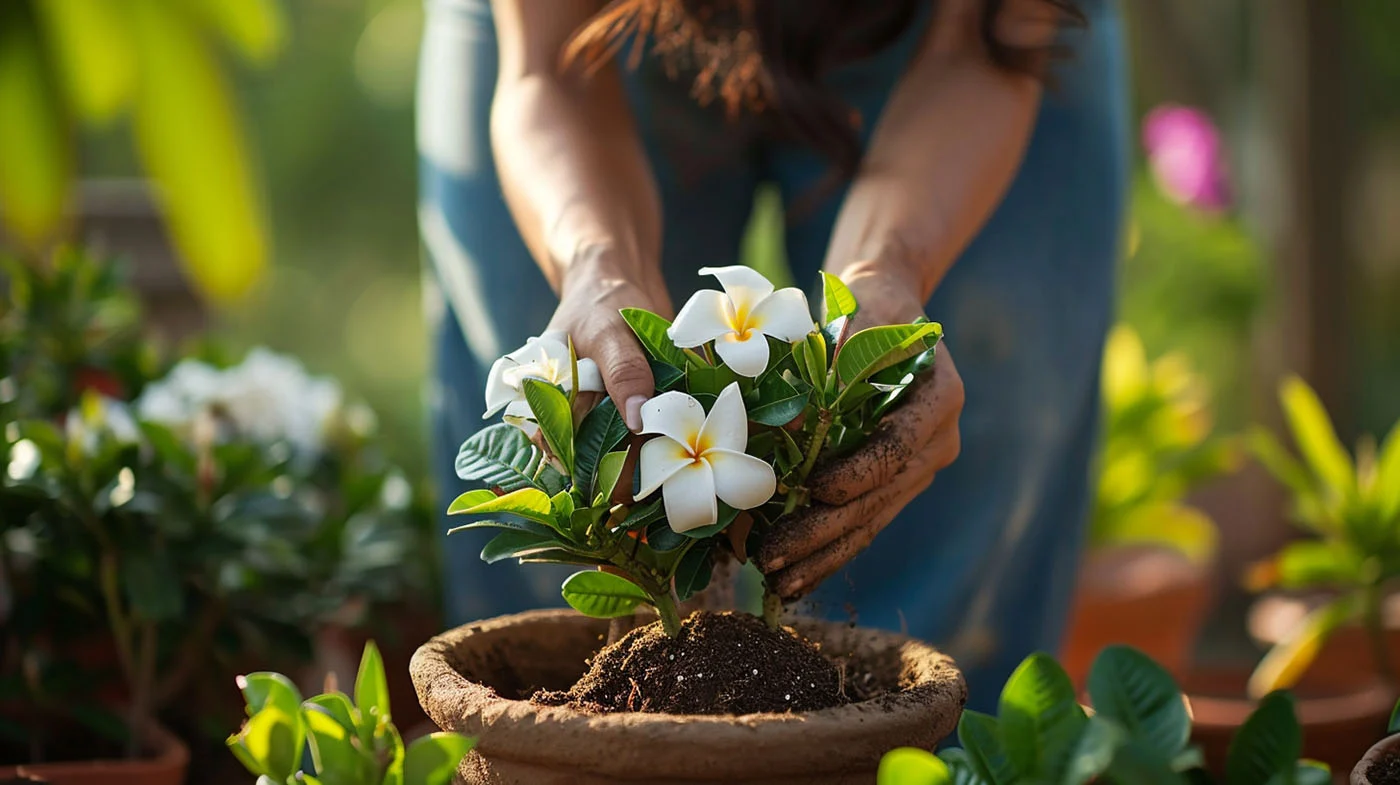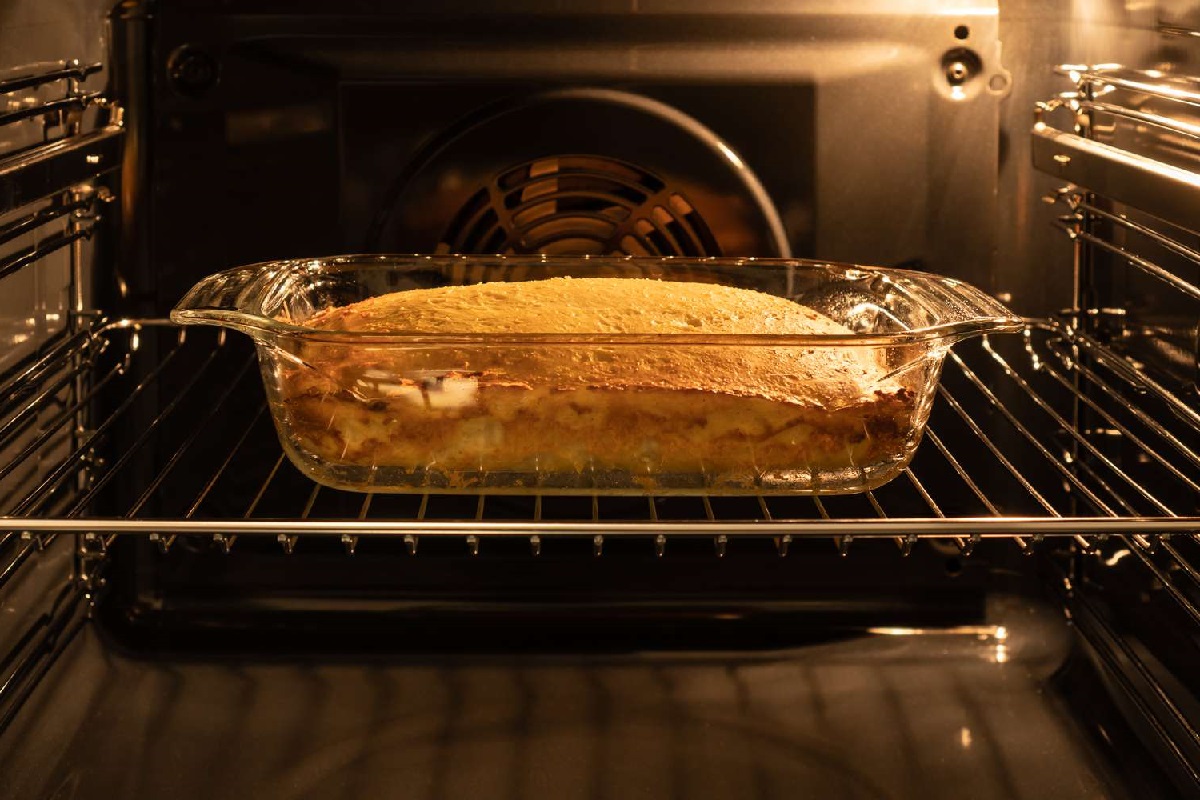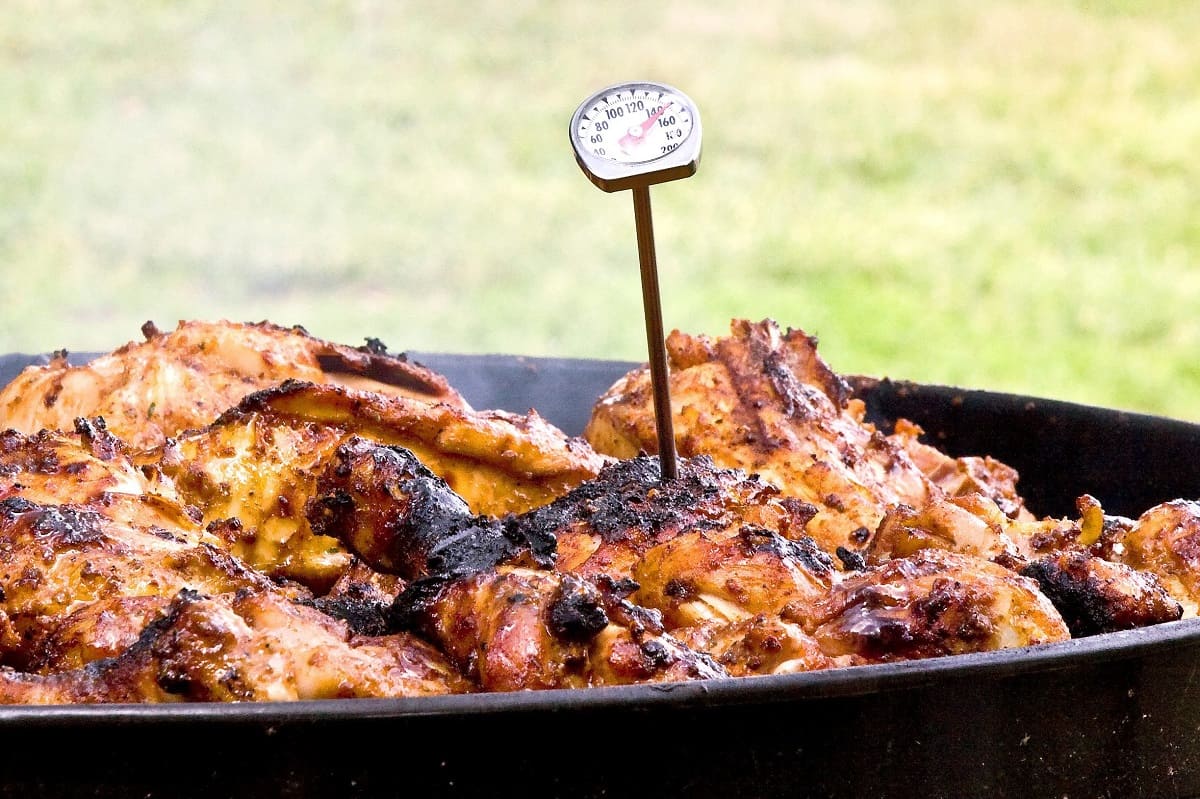Home>Weather and Climate>Essential Plumeria Care Guide


Weather and Climate
Essential Plumeria Care Guide
Published: March 2, 2024
Learn how weather and climate impact the care of your plumeria plants with our essential guide. Find expert tips and advice for optimal growth and blooming.
(Many of the links in this article redirect to a specific reviewed product. Your purchase of these products through affiliate links helps to generate commission for Temperatures.com, at no extra cost. Learn more)
Table of Contents
Introduction
Plumeria, also known as frangipani, is a stunning and fragrant flowering plant that has captivated gardeners and flower enthusiasts for centuries. With its vibrant and aromatic blossoms, plumeria adds a touch of tropical elegance to any garden or landscape. Whether you're a seasoned gardener or a novice plant enthusiast, understanding the essential care guidelines for plumeria is crucial for nurturing these beautiful blooms to their full potential.
In this comprehensive guide, we will delve into the intricate details of plumeria care, covering everything from selecting the ideal location and soil composition to watering techniques, pruning methods, and pest management. By gaining a deeper understanding of the unique requirements of plumeria plants, you can cultivate a thriving and flourishing garden filled with these exquisite flowers.
Throughout this guide, we will explore the nuances of plumeria care, providing valuable insights and practical tips to empower you in nurturing these enchanting plants. Whether you're seeking to enhance your outdoor oasis with a touch of tropical allure or simply eager to expand your horticultural expertise, this guide will serve as your indispensable companion on the journey to mastering the art of plumeria care.
So, let's embark on this enlightening exploration of plumeria care, unraveling the secrets to cultivating vibrant, fragrant blooms and fostering a deeper appreciation for the captivating world of tropical flora. Get ready to immerse yourself in the enchanting realm of plumeria and unlock the keys to nurturing these mesmerizing flowers with confidence and expertise.
Understanding Plumeria
Plumeria, also known as frangipani, is a genus of flowering plants native to Central America, Mexico, the Caribbean, and South America. These stunning plants are renowned for their vibrant, aromatic blossoms, which come in a myriad of colors, including shades of white, yellow, pink, and red. The flowers are often used in traditional Hawaiian leis, adding a touch of exotic beauty and fragrance to these iconic garlands.
Plumeria plants are characterized by their thick, succulent branches and leathery, elongated leaves. They are deciduous, shedding their leaves during the cooler months and bursting into a profusion of blooms during the warmer seasons. The flowers, which are known for their intoxicating fragrance, typically feature five petals and a striking, contrasting center.
One of the most fascinating aspects of plumeria is the diversity of cultivars available, each boasting its own unique flower color, size, and fragrance. From the petite and delicate "Celadine" variety with its pale yellow blossoms to the bold and vibrant "Singapore Pink" cultivar, plumeria offers an enchanting array of options for gardeners and flower enthusiasts.
Plumeria plants thrive in tropical and subtropical climates, where they can bask in plenty of sunlight and warmth. While they are often associated with the idyllic landscapes of Hawaii and the Caribbean, plumeria can also be cultivated in other regions, provided they receive adequate care and attention.
Understanding the specific needs of plumeria plants is essential for fostering their health and vitality. From selecting the ideal location to providing the right soil composition and implementing proper watering techniques, every aspect of plumeria care plays a pivotal role in nurturing these captivating blooms.
As we delve deeper into the intricacies of plumeria care, we will uncover the secrets to cultivating these exquisite flowers and creating a flourishing garden filled with tropical splendor. So, let's embark on this enlightening journey into the world of plumeria, where beauty, fragrance, and horticultural expertise converge to create a truly mesmerizing botanical experience.
Choosing the Right Location
Selecting the optimal location for your plumeria plants is a critical step in ensuring their overall health and blooming success. Plumeria thrives in warm, sunny environments, making it essential to choose a spot that receives ample sunlight. Ideally, the chosen location should provide at least six hours of direct sunlight daily, allowing the plants to photosynthesize efficiently and develop robust blooms.
In addition to sunlight, it's important to consider the temperature and climate of the chosen location. Plumeria plants are best suited to tropical and subtropical climates, where they can revel in warm temperatures and high humidity. If you reside in a region with cooler or temperate climates, it's advisable to grow plumeria in containers that can be moved indoors during the colder months to protect them from frost and chilly temperatures.
When selecting the right location for your plumeria, it's crucial to ensure adequate air circulation. Plumeria plants benefit from gentle breezes that help prevent the buildup of excess moisture, reducing the risk of fungal diseases. Avoid planting them in areas with stagnant air or dense foliage that could impede air movement around the plants.
Furthermore, consider the soil drainage in the chosen location. Plumeria plants detest standing water, so it's imperative to plant them in well-draining soil or raised beds to prevent waterlogging. This ensures that the roots remain healthy and free from the perils of root rot, a common issue in poorly drained soil.
In summary, when choosing the right location for your plumeria plants, prioritize ample sunlight, warm temperatures, and good air circulation. Whether you're cultivating them in the ground or in containers, providing an environment that mimics their native tropical habitat will set the stage for vibrant growth and prolific blooming. By carefully considering these factors, you can create an ideal setting for your plumeria plants to flourish and grace your garden with their resplendent beauty.
Soil and Fertilization
The soil composition and fertilization regimen play pivotal roles in the overall health and blooming prowess of plumeria plants. Understanding the specific soil requirements and implementing a well-balanced fertilization strategy are essential for nurturing these tropical beauties to their full potential.
Soil Composition
Plumeria plants thrive in well-draining soil that allows excess water to percolate through, preventing the roots from becoming waterlogged. A recommended soil mix for plumeria consists of a combination of coarse sand, perlite, and organic matter such as coconut coir or compost. This blend provides the ideal balance of aeration, drainage, and nutrient retention, creating a conducive environment for robust root development and overall plant vigor.
When planting plumeria in containers, it's imperative to ensure that the pots have drainage holes to prevent water from accumulating at the bottom. This promotes healthy root growth and reduces the risk of root rot, a common issue in waterlogged soil. Additionally, using a well-draining soil mix tailored to the specific needs of plumeria sets the stage for thriving plants that are better equipped to withstand environmental stressors.
Read more: Tips For Caring For Your Meyer Lemon Tree
Fertilization
Proper fertilization is key to supporting the growth and blooming capacity of plumeria plants. A balanced, water-soluble fertilizer with a formulation such as 10-30-10 or 20-20-20 is recommended during the growing season, typically from spring to early fall. This balanced fertilizer provides essential nutrients, including nitrogen, phosphorus, and potassium, which are vital for promoting healthy foliage, robust blooms, and overall plant vitality.
It's important to apply fertilizer sparingly and consistently, following the manufacturer's instructions to avoid over-fertilization, which can lead to salt buildup in the soil. A general guideline is to fertilize plumeria plants every two to three weeks during the growing season, tapering off as the plants enter dormancy in the cooler months. Additionally, incorporating micronutrients such as iron and magnesium into the fertilization regimen can further enhance the plants' overall health and resilience.
When applying fertilizer, it's advisable to water the plants thoroughly before and after fertilization to ensure proper nutrient uptake and minimize the risk of root burn. This practice helps distribute the fertilizer evenly in the soil, allowing the roots to access the essential nutrients they need for sustained growth and blooming prowess.
By paying careful attention to the soil composition and implementing a well-structured fertilization regimen, you can provide plumeria plants with the optimal growing conditions they require to thrive. These foundational elements are instrumental in nurturing healthy, vibrant plumeria plants that grace your garden with their stunning blossoms and alluring fragrance.
Watering and Humidity
Proper watering and humidity management are crucial aspects of plumeria care, directly impacting the plants' overall health, blooming frequency, and resilience. Understanding the nuanced requirements of plumeria regarding water and humidity is essential for cultivating thriving plants that exhibit robust growth and abundant blossoms.
Watering Frequency
Balancing the watering frequency is a delicate art when it comes to plumeria care. These plants prefer a consistent watering schedule but detest waterlogged conditions. During the active growing season, which typically spans from spring to early fall, it's advisable to water plumeria plants deeply but infrequently. Allowing the soil to dry out slightly between waterings helps prevent the risk of root rot and fungal diseases, promoting healthy root development and overall plant vigor.
In contrast, as the plants transition into dormancy during the cooler months, it's essential to reduce the frequency of watering. Plumeria plants undergo a period of rest during dormancy, requiring less moisture to sustain their physiological processes. By adjusting the watering regimen to align with the plants' dormancy phase, you can prevent overwatering and mitigate the potential for root issues that may arise from excessive moisture in the soil.
Humidity Considerations
Plumeria plants thrive in environments with moderate to high humidity, mirroring the tropical and subtropical regions where they naturally flourish. While they can adapt to drier conditions, providing adequate humidity levels can significantly enhance their overall well-being and blooming performance. In regions with low humidity, especially during the drier months, employing strategies such as misting the foliage or using a humidifier can help create a more favorable microclimate for plumeria plants.
Furthermore, situating plumeria plants in locations with good air circulation can aid in regulating humidity levels and preventing the buildup of excess moisture, which can lead to fungal issues. Gentle air movement around the plants helps mitigate the risk of humidity-related problems while promoting robust growth and blooming.
Watering Techniques
When watering plumeria plants, it's essential to apply water directly to the root zone, allowing it to penetrate deeply into the soil. This encourages the development of a robust root system as the roots grow in search of moisture, contributing to the plants' overall resilience and stability. Additionally, using a watering wand or a soaker hose can facilitate precise watering, ensuring that the moisture reaches the root zone without splashing excessively onto the foliage, which can potentially lead to fungal infections.
By carefully managing the watering frequency and humidity levels, you can create an optimal environment for plumeria plants to thrive. These considerations, coupled with a keen understanding of the plants' seasonal needs, form the cornerstone of effective water and humidity management, fostering healthy, vibrant plumeria plants that enchant with their captivating blooms and lush foliage.
Pruning and Maintenance
Pruning and maintenance are integral aspects of nurturing healthy and aesthetically pleasing plumeria plants. Proper pruning not only enhances the plant's overall appearance but also promotes robust growth, encourages blooming, and ensures the plant's long-term vitality. Additionally, regular maintenance practices contribute to the plants' well-being, addressing potential issues and fostering a thriving garden filled with vibrant plumeria blooms.
Pruning Techniques
When it comes to pruning plumeria, the primary objectives are to shape the plant, remove dead or diseased branches, and stimulate new growth. Pruning is typically carried out during the active growing season, allowing the plants to recover and generate fresh growth. It's essential to use clean, sharp pruning shears to make precise cuts, minimizing the risk of damage and promoting swift healing of the pruned areas.
One of the key pruning techniques for plumeria involves removing spent inflorescences, which not only enhances the plant's appearance but also redirects its energy towards producing new blooms. By snipping off faded or wilted flower clusters, you encourage the plant to focus its resources on developing new blossoms, prolonging the blooming period and elevating the visual appeal of the plant.
In addition to deadheading, selective branch pruning can help shape the plumeria plant and encourage a more compact growth habit. Removing overcrowded or crossing branches allows for better air circulation and light penetration, reducing the risk of fungal diseases and promoting uniform growth throughout the plant. Furthermore, pruning back leggy or excessively long branches can stimulate the emergence of new shoots and encourage a fuller, bushier growth form.
Maintenance Practices
Beyond pruning, regular maintenance practices are essential for sustaining the health and vigor of plumeria plants. This includes monitoring the plants for signs of pests and diseases, addressing any issues promptly, and providing ongoing care to support their growth and blooming potential.
Inspecting the foliage and stems for pests such as aphids, mealybugs, or spider mites is crucial for early detection and intervention. Should any pests be identified, employing targeted control measures such as insecticidal soaps or horticultural oils can effectively manage infestations while minimizing the impact on beneficial insects and the overall ecosystem.
Furthermore, maintaining a vigilant stance against common plumeria diseases such as powdery mildew and stem rot is paramount. Implementing cultural practices such as proper spacing between plants, adequate air circulation, and avoiding overhead watering can help mitigate the risk of fungal diseases, reducing the need for chemical interventions and promoting a healthier growing environment for the plants.
Regularly inspecting the plants for any signs of nutrient deficiencies, wilting, or abnormal growth can provide valuable insights into their overall health. Adjusting the fertilization regimen as needed and ensuring that the plants receive adequate water and sunlight are fundamental maintenance practices that contribute to their sustained well-being.
By incorporating effective pruning techniques and embracing proactive maintenance practices, you can cultivate vibrant, healthy plumeria plants that grace your garden with their resplendent blooms and lush foliage. These efforts not only enhance the plants' visual allure but also contribute to their long-term vitality, ensuring a flourishing garden filled with the captivating beauty of plumeria.
Pests and Diseases
Pests and diseases pose potential threats to the health and vitality of plumeria plants, necessitating vigilant monitoring and proactive measures to safeguard these tropical beauties from harm. By understanding the common pests and diseases that afflict plumeria and implementing targeted strategies for prevention and control, you can effectively mitigate the risks and foster thriving plants that exhibit robust growth and abundant blossoms.
Common Pests
Plumeria plants are susceptible to infestations by various pests, including aphids, mealybugs, spider mites, and whiteflies. These pests can sap the plants' vitality by feeding on their sap, causing wilting, yellowing of leaves, and stunted growth. Aphids, in particular, are known for their rapid reproductive rate, making early detection and intervention crucial in preventing widespread infestations.
Mealybugs, characterized by their cottony appearance, often congregate on the undersides of leaves and along the stems, where they feed and reproduce. Spider mites, tiny arachnids that thrive in hot, dry conditions, can cause stippling and webbing on the foliage, leading to diminished plant vigor. Whiteflies, small insects with powdery white wings, can cluster on the undersides of leaves, draining the plants' resources and potentially transmitting viral diseases.
Disease Management
Plumeria plants are susceptible to fungal diseases such as powdery mildew and stem rot, which can compromise their health and blooming capacity. Powdery mildew manifests as a white, powdery coating on the leaves and stems, hindering photosynthesis and weakening the plants. Stem rot, caused by excessive moisture and poor air circulation, can lead to the decay of the plant's stems and roots, posing a serious threat to its survival.
Prevention and Control
To combat pest infestations, regular inspection of the plants for signs of pest activity is essential. Early detection allows for targeted interventions, such as spraying with insecticidal soaps or horticultural oils, which effectively manage pests while minimizing the impact on beneficial insects. Additionally, promoting a diverse and balanced ecosystem in the garden can attract natural predators of pests, contributing to a more sustainable approach to pest control.
Preventing fungal diseases involves maintaining good air circulation around the plants, avoiding overhead watering, and providing proper spacing between plumeria specimens. Applying preventive fungicidal treatments, especially during periods of high humidity, can further fortify the plants against fungal infections, bolstering their resilience and overall health.
By remaining vigilant and proactive in addressing potential pest and disease issues, you can create a healthier growing environment for plumeria plants, fostering their sustained well-being and blooming prowess. These measures not only protect the plants from harm but also contribute to a thriving garden filled with the captivating allure of plumeria blooms.
Read more: Ideal Temperature For Dogs To Wear A Coat
Propagation Techniques
Propagation is a fascinating aspect of plumeria care, offering enthusiasts the opportunity to expand their collection of these captivating plants and share their beauty with others. There are several methods of propagating plumeria, each with its own unique advantages and considerations. Whether you're a seasoned gardener or a novice plant enthusiast, delving into the art of plumeria propagation opens a world of horticultural exploration and the potential to nurture new generations of these exquisite tropical blooms.
1. Stem Cuttings
One of the most popular and reliable methods of propagating plumeria is through stem cuttings. This technique involves carefully selecting a healthy, mature stem segment, typically around 12 to 18 inches in length, and allowing it to callus for a few days to minimize the risk of rot. The cutting is then planted in a well-draining soil mix, where it develops roots over time, eventually giving rise to a new plumeria plant. Stem cuttings offer a straightforward and effective means of propagating plumeria, allowing enthusiasts to replicate their favorite cultivars and expand their garden with ease.
2. Air Layering
Air layering is another propagation method that can be employed to propagate plumeria plants. This technique involves creating a small incision or wound on a healthy stem, encasing the wounded area with a moistened rooting medium, and wrapping it with plastic to promote root development. Once roots have formed, the rooted section can be severed from the parent plant and potted separately, giving rise to a new plumeria specimen. Air layering offers a reliable means of propagating plumeria while allowing the rooted section to remain attached to the parent plant until it is ready for independent growth.
3. Seed Propagation
While less commonly utilized due to the variability in seedling traits, plumeria can also be propagated from seeds. Collecting seeds from mature plumeria pods and sowing them in a well-draining soil mix can yield new plants with unique characteristics. However, it's important to note that seed-grown plumeria may exhibit variations in flower color, size, and fragrance, making this method a source of excitement and surprise for enthusiasts seeking to explore the diversity of plumeria cultivars.
Read more: Maine September Weather Guide
4. Grafting
Grafting is a specialized propagation technique that involves joining a plumeria cutting, known as the scion, onto a compatible rootstock. This method allows for the replication of specific cultivars and the enhancement of plant vigor through the use of robust rootstocks. Grafting requires precision and expertise, making it a favored approach for propagating rare or prized plumeria varieties while harnessing the benefits of vigorous root systems.
By exploring these propagation techniques, enthusiasts can embark on a rewarding journey of nurturing new plumeria plants and expanding their botanical horizons. Whether through stem cuttings, air layering, seed propagation, or grafting, the art of plumeria propagation offers a gateway to discovery and the joy of cultivating these enchanting tropical blooms.
Conclusion
In conclusion, the art of plumeria care encompasses a rich tapestry of horticultural expertise, botanical fascination, and the sheer delight of nurturing these captivating tropical blooms. From understanding the unique characteristics of plumeria plants to implementing essential care practices, enthusiasts and gardeners alike are immersed in a world of vibrant colors, intoxicating fragrances, and the gratifying pursuit of cultivating thriving plumeria specimens.
Throughout this comprehensive guide, we have delved into the intricacies of plumeria care, unraveling the secrets to fostering healthy, vibrant plants that grace gardens and landscapes with their resplendent beauty. By selecting the optimal location that provides ample sunlight, warm temperatures, and good air circulation, enthusiasts can create an ideal environment for plumeria to thrive. The careful consideration of soil composition, fertilization, watering techniques, and humidity management further contributes to the plants' sustained well-being and blooming prowess.
Pruning and maintenance practices play a pivotal role in shaping the aesthetic appeal and overall health of plumeria plants. By employing precise pruning techniques and proactive maintenance measures, enthusiasts can ensure that their plumeria specimens exhibit robust growth, lush foliage, and a profusion of blossoms. Additionally, addressing potential pest and disease issues through vigilant monitoring and targeted interventions safeguards the plants from harm, fostering a healthier growing environment and sustained vitality.
The exploration of propagation techniques opens a world of possibilities for enthusiasts, offering avenues to expand their collection of plumeria plants and share their beauty with others. Whether through stem cuttings, air layering, seed propagation, or grafting, the art of plumeria propagation invites enthusiasts to embark on a journey of discovery, diversity, and the joy of nurturing new generations of these exquisite tropical blooms.
As we conclude this enlightening journey into the world of plumeria care, it is evident that the allure of these tropical beauties extends far beyond their stunning blossoms and intoxicating fragrance. It encompasses a profound appreciation for the intricate nuances of horticulture, the joy of botanical exploration, and the gratification of cultivating thriving plants that enrich our outdoor spaces with their resplendent beauty.
In essence, plumeria care is a harmonious blend of art and science, where the cultivation of these captivating blooms becomes a testament to the enduring allure of tropical flora and the boundless rewards of nurturing nature's most exquisite creations. Whether adorning gardens, adorning leis, or simply brightening our surroundings with their vibrant presence, plumeria plants stand as timeless symbols of beauty, elegance, and the enduring enchantment of the natural world.










